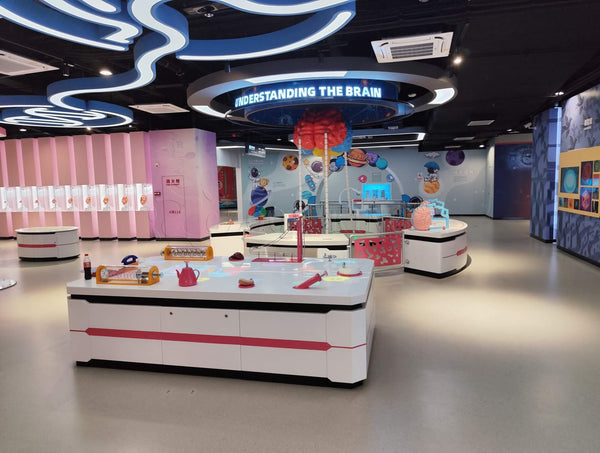Educator Resources: Combining Science and Interactive Design to Inspire Young Minds

Introduction
In today’s educational landscape, creating engaging and immersive learning experiences for students is more important than ever. Interactive science exhibits that merge elegant design with core educational principles offer an ideal way to inspire curiosity and foster critical thinking in young learners. These educator resources provide teachers with tools and ideas that can enhance the learning experience, making science fun and accessible for students of all ages. Whether it's in the classroom or during field trips to science museums, these resources help educators connect with students in meaningful ways.
Interactive Science and Elegant Design: A Perfect Pairing for Education
The fusion of scientific concepts with interactive design creates a dynamic learning environment that keeps children engaged. These exhibits are not just visually appealing but also rooted in educational theories designed to stimulate young minds. Here’s how the design and interactive elements benefit educators and students:
-
Engagement through Hands-On Interaction: By allowing children to interact with exhibits—such as pressing buttons, manipulating levers, or engaging in touch-screen activities—students become active participants in their learning journey.
-
Elegant Visual Design: Beautifully crafted exhibits capture children’s attention, while clear, concise design ensures that the educational message isn’t lost in the aesthetics.
-
Supporting Different Learning Styles: Interactive exhibits cater to various learning styles—visual, auditory, and kinesthetic—making complex scientific concepts accessible to a wide range of learners.
These interactive science exhibits provide the perfect resources for educators to create a stimulating learning environment.
Why Educators Love These Resources
Teachers are always looking for ways to make science lessons more engaging and effective. These exhibits and resources offer numerous benefits for educators, helping them enhance the educational experience in and out of the classroom:
-
Curriculum Alignment: The scientific concepts demonstrated in these exhibits often align with school curricula, making it easier for teachers to integrate hands-on learning into their lessons.
-
Interactive Learning: With exhibits that encourage participation, students can explore concepts such as physics, biology, and chemistry in real-time, gaining a deeper understanding of the subject matter.
-
Bridging Theory and Practice: These educator resources provide a bridge between textbook learning and practical application. When students see scientific theories come to life, it solidifies their understanding.
How Educator Resources Enhance Learning Outcomes
Interactive exhibits are more than just fun—they significantly enhance learning outcomes. By providing students with the tools to explore scientific principles on their own, these exhibits foster critical thinking and problem-solving skills. Here’s how:
-
Boosting Retention: Research shows that students retain information better when they actively participate in learning. Interactive exhibits, with their hands-on nature, help reinforce key concepts and improve memory retention.
-
Encouraging Inquiry-Based Learning: Exhibits that combine science with interactive design encourage students to ask questions, experiment, and think critically—key components of inquiry-based learning.
-
Promoting Collaborative Learning: Many exhibits are designed for group interaction, encouraging students to work together, share ideas, and learn from one another in a collaborative environment.
Top Interactive Science Exhibit Examples
Educator resources like interactive exhibits are most effective when they are both visually stimulating and educationally sound. Here are some standout examples of science and interactivity coming together:
-
Electricity Generation Exhibit: Students can generate electricity by turning a crank or pressing a button, learning about circuits, energy, and magnetism.
-
Water Cycle Simulation: With hands-on models, students can manipulate variables to understand the stages of the water cycle and its environmental impact.
-
Human Body Exploration: Interactive displays allow students to examine the systems of the human body in a way that textbooks alone can’t provide.
Conclusion
Educator resources that combine science with interactive design are transforming the way students learn. Whether in classrooms or science museums, these beautifully designed exhibits inspire curiosity and a love of learning in children. By aligning with modern educational principles and offering hands-on, inquiry-based experiences, these resources are essential tools for teachers aiming to enhance the educational experience for young minds.
